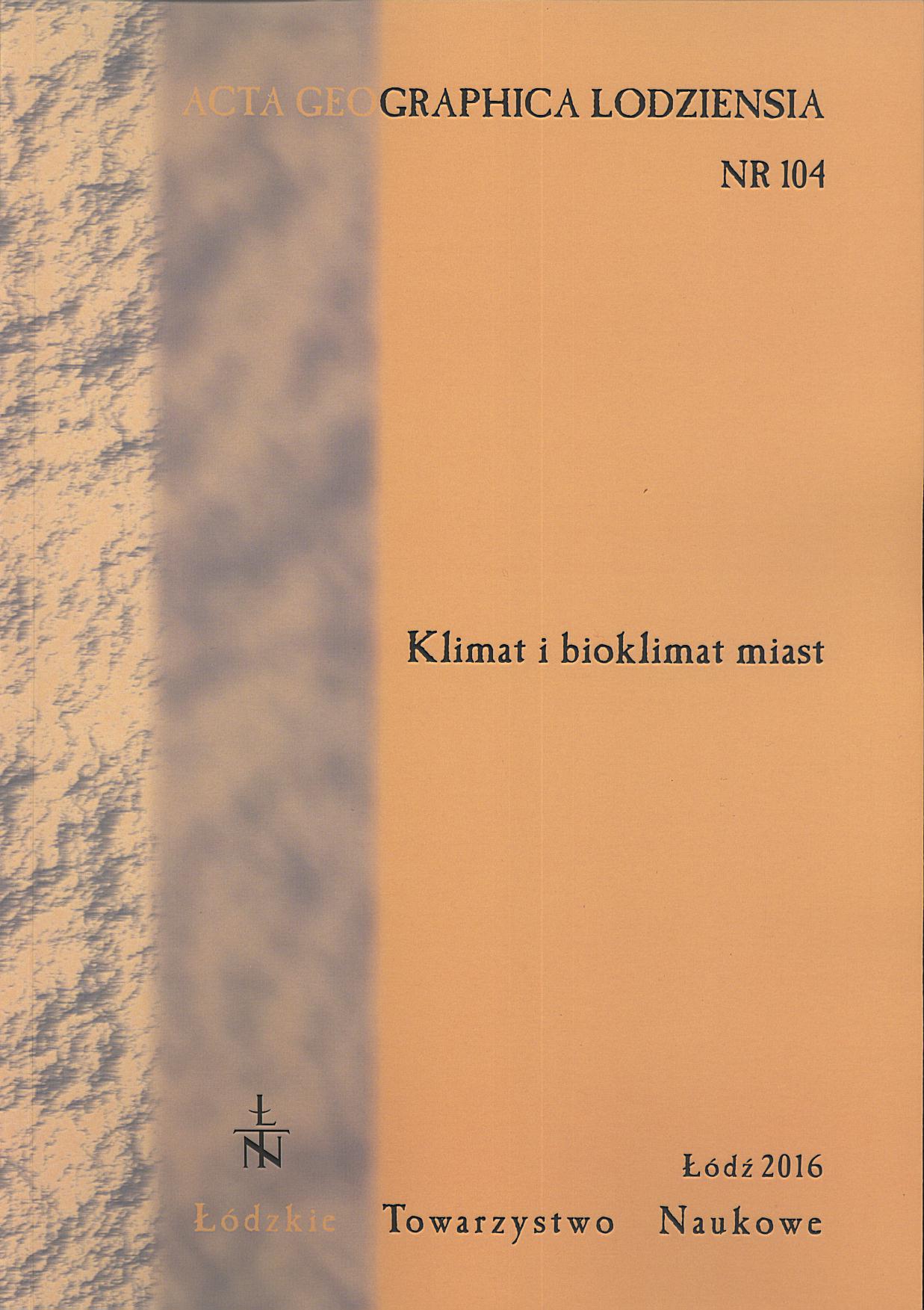Turbulencja optyczna w centrum miasta w świetle pomiarów scyntylometrycznych na przykładzie Łodzi
Optical turbulence measured with scintillometer over the city centre in the example of Łódź
Author(s): Krzysztof Fortuniak, Mariusz Siedlecki, Włodzimierz Pawlak, Mariusz ZielińskiSubject(s): Geography, Regional studies, Environmental Geography
Published by: Łódzkie Towarzystwo Naukowe
Keywords: optical turbulence; scintillometer; refractive index structure parameter; urban climate
Summary/Abstract: This study considers the annual, seasonal and diurnal variability of optical turbulence intensitywhich was determined with the refractive index structure parameter (Cn2) measured with a scintillometer.The data was collected in the period of August 2009 – November 2012 over the most denselybuilt-up area of Łódź. The scintillometer measured path-averaged Cn2, which allowed to determine theoptical turbulence intensity. On the basis of the Cn2 values reported in literature for different atmosphericstability conditions, and comparison with the data collected from two masts located in Łódź, theoptical turbulence intensity was divided into three classes: strong (Cn2 > 10–14), moderate (10–14 > Cn2 >10–15) and weak turbulence (Cn2 < 10–15).Strong optical turbulence was observed almost only during daytime hours, mostly during thewarm half of the year. Cn2 values exceeding 10–14 were most frequent in May and June, and appeared almost 30% of the time. Seldom was the strong turbulence observed in autumn and winter. During the night, moderate and weak optical turbulence occurs. From February to September, strong turbulence ismost frequent at noon. It is worth mentioning that during the whole measurement campaign there wereonly a few cases with Cn2 > 10–13 that could indicate the possibility of visible image blurring.The annual and diurnal course of Cn2 seems to have several features that are characteristic for urbanareas. Frequent occurrence of moderate turbulence during the night could results from the urbanheat island effect. The heat stored in urban areas during the day is slowly released after the sunset andthe anthropogenic heat flux can enhance the vertical heat exchange. This, in turn, can result in theincrease of Cn2 (i.e. the optical turbulence intensity).
Journal: Acta Geographica Lodziensia
- Issue Year: 2016
- Issue No: 104
- Page Range: 75-85
- Page Count: 11
- Language: Polish

